More EV chargers, bicycle lots and super-low energy buildings at upcoming Punggol Digital District
The upcoming business park in Punggol will have the largest number of electric vehicle chargers in a single estate.
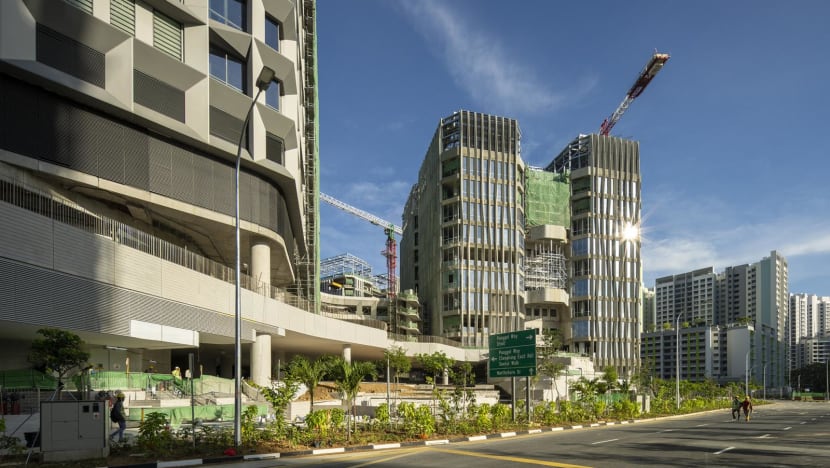
Punggol Digital District, an upcoming smart and sustainable business district spanning 50 hectares, will be Singapore's largest mixed-use Green Mark Platinum District. (Photo: JTC)

This audio is generated by an AI tool.
SINGAPORE: Fewer parking spots but a lot more electric vehicle (EV) chargers and bicycle parking lots will be found at the upcoming Punggol Digital District, touted to be Singapore’s first smart and sustainable business park.
The 50-hectare district – roughly the size of 70 football fields – will have 96 EV chargers in its first phase of opening. The plan is to ramp that up to 151 eventually, making it the location with the most EV chargers in Singapore, said national industrial estate developer JTC on Thursday (May 16).
To support environmentally friendly transport, the "car-lite" district in Punggol North will have 1,500 bicycle parking lots and facilities such as lockers and shower rooms.
Correspondingly, there will be fewer vehicle parking lots – at around 1,200, which is 50 per cent less than the requirements of a regular industrial estate, said JTC’s group director for new estates Nelson Liew.
Besides greener transport, the new business park will have infrastructure and technology to optimise land use and energy. This will also lower its carbon footprint, with a 35 per cent reduction in operational carbon emissions annually – equivalent to taking 4,000 cars off the road, said JTC.
FIRST PHASE TO OPEN FROM THIRD QUARTER
The Punggol Digital District will be home to a business park and the new campus of the Singapore Institute of Technology (SIT).
Since breaking ground on the district in January 2020, JTC has confirmed several tenants, such as local bank UOB. When completed, the site is expected to create 28,000 jobs and take in up to 12,000 students.
It was recently announced that a 200-room hotel facing Coney Island will be built.
Other amenities include a hawker centre, community club, childcare centres, a bus interchange and the new Punggol Coast MRT station. The MRT station, an extension of the North East Line, will be operational at the end of 2024.
JTC said the first phase of the Punggol Digital District, covering 21 hectares, will open progressively from the third quarter of this year.
Five business office towers will get their temporary occupation permits (TOP) – which signify that a construction project is completed – in September, while another three will get theirs next January, Mr Liew told reporters at a briefing earlier this month.
The SIT campus will welcome its first batch of students – 3,800 students from the business, communication and design, as well as infocomm technology programmes – in September. The remaining students will start classes at the new campus in 2025, the university said.
GREEN BUILDINGS
The business park has received the Platinum Award, the highest rating, under the Building and Construction Authority's Green Mark Districts. The award recognises sustainable practices in district developments.
Seventeen buildings by JTC and SIT have also been recognised with the Green Mark Platinum award for adopting a mix of sustainable design and construction strategies, such as having "high-performance" facades that can reduce solar heat gain by 30 per cent and smart controls to maximise daylight for lighting.
They have also been designed with a north-south orientation to be aligned with the direction of Singapore’s prevailing winds, hence boosting natural ventilation.
Another three buildings have been certified as super-low energy buildings for being able to achieve at least 40 per cent energy savings. This includes an eight-storey office block constructed with mass-engineered timber sourced from sustainably managed forests, where new trees are continuously planted to replace those felled.
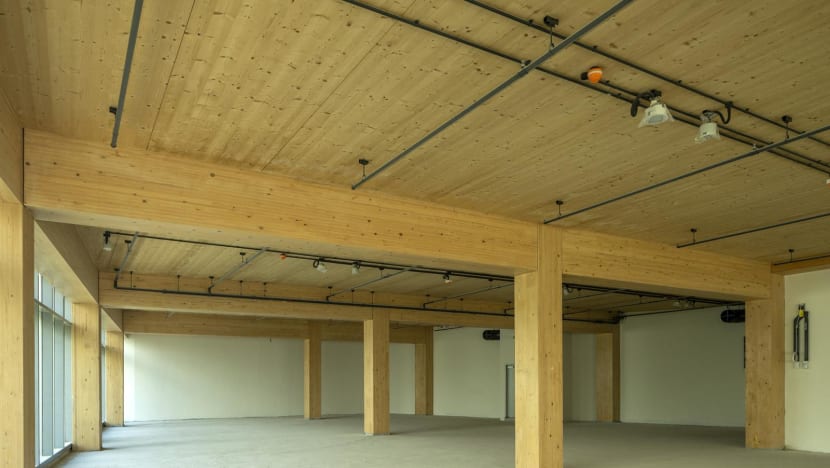
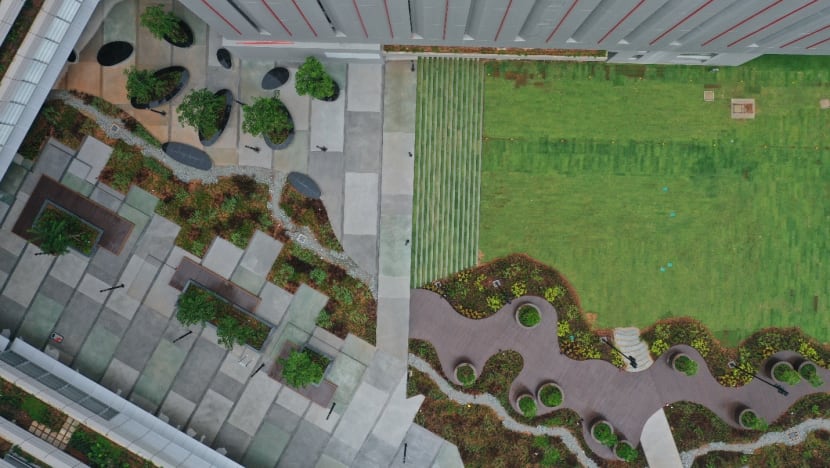
The SIT campus will be home to the other two super low-energy buildings.
One such building, which houses a multi-purpose hall, has windows with “high-performance” glass to reduce solar heat, while the other with a food court uses hybrid cooling and has a photovoltaic roof that generates solar energy.
JTC said there are plans for solar panels to be fitted on multiple rooftops across the district to produce over 3,000 megawatt-hours of solar energy a year. This is equivalent to the annual energy consumption of 11,000 three-room HDB flats.
Bioswales and rain gardens will capture rainwater for reuse in landscape irrigation. Such features can help save 208,000 cubic metres of water annually, enough to fill 83 Olympic-sized swimming pools, JTC said.
GREEN TECHNOLOGY AND NATURE
Punggol Digital District will be powered by an open digital platform, which collects real-time data.
The platform also allows various systems, such as the building management systems, district cooling system and a smart energy grid, to “talk to one another”, said JTC’s Mr Liew.
“For example, you can control the temperature of meeting rooms depending on the temperature outdoors and how many occupants in the room observed through CCTV,” he added. “Everything becomes interoperable.”
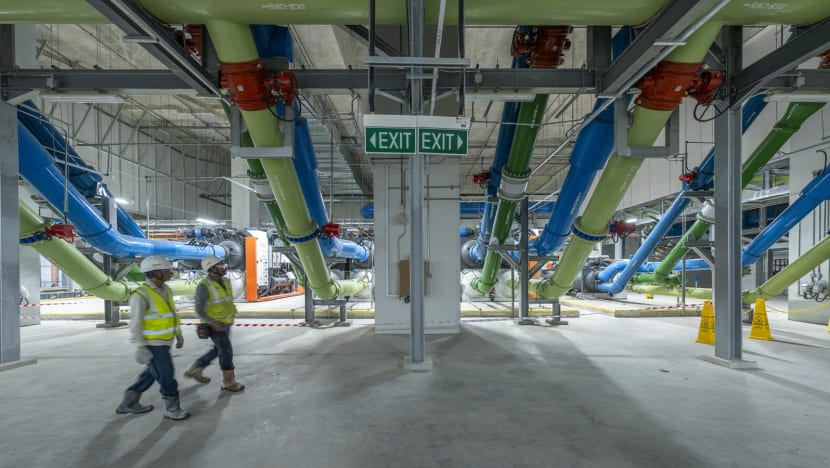
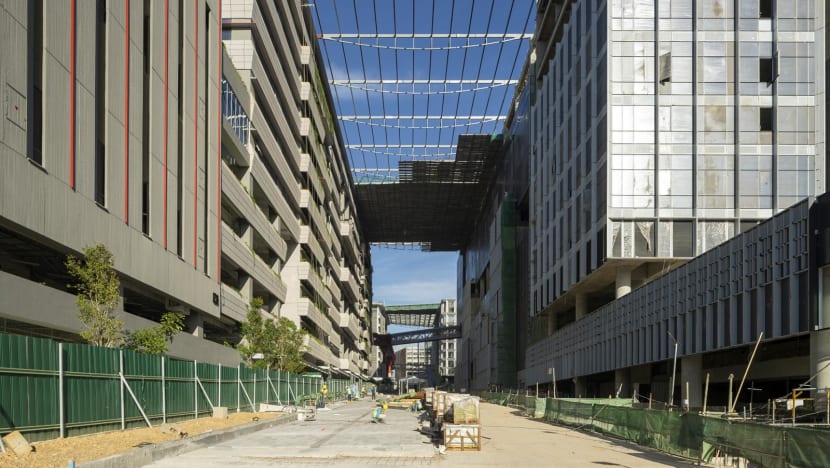
All estate services such as cooling plants and the pneumatic waste conveyance system are located underground so that the district can be fully walkable, said Mr Chan Ee Mun, director at WOHA Architects.
The new MRT station and vehicle parking lots are also located underground, freeing up the ground level for walking and cycling paths, and preserving existing greenery.
Four hectares of the site’s vegetation have been retained and will be transformed into a community park. Existing rubber and sea apple trees along the old Punggol Road will also stay intact as the road – once the main transport route for farmers and fishermen plying their wares from Punggol to Serangoon – is pedestrianised into a 1.3km-long heritage trail.
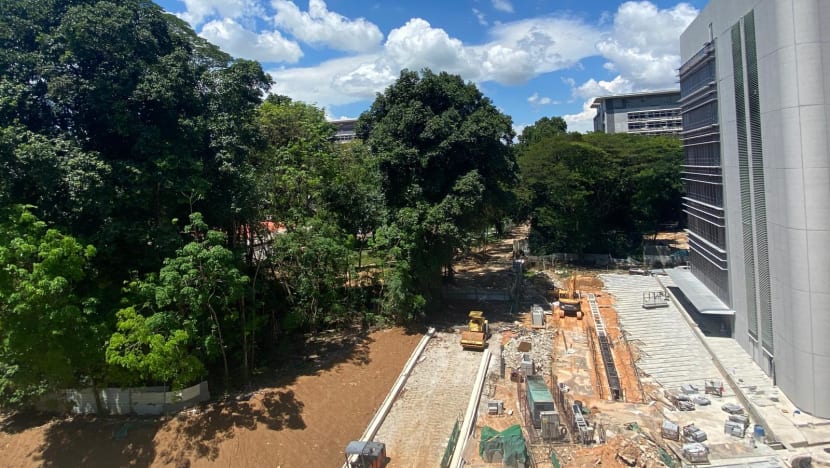
“GREEN” LEASE FOR TENANTS
Commercial lease agreements for tenants will also include sustainability considerations.
Mr Liew told reporters that all tenants – be it office, retail or food and beverage – will have to sign a “green lease” with conditions to use energy-saving appliances and limit power and water usage.
While the upfront investment in the Punggol Digital District is “slightly higher” due to the greener designs and technologies involved, Mr Liew said this “is the way to go” as Singapore aims to achieve net-zero emissions by 2050.
Describing the new district as “a good showcase of how urban sustainability can be deployed at scale”, JTC intends to replicate these technological solutions at other industrial estates.
“When we do so, we will be able to contribute to Singapore meeting its net-zero goal and progress towards a smart nation,” said Mr Liew.
Editor's note: Details in this article about the number of students moving to the new campus in the first batch and the timelines involved have been amended after SIT corrected information that was previously given.

















